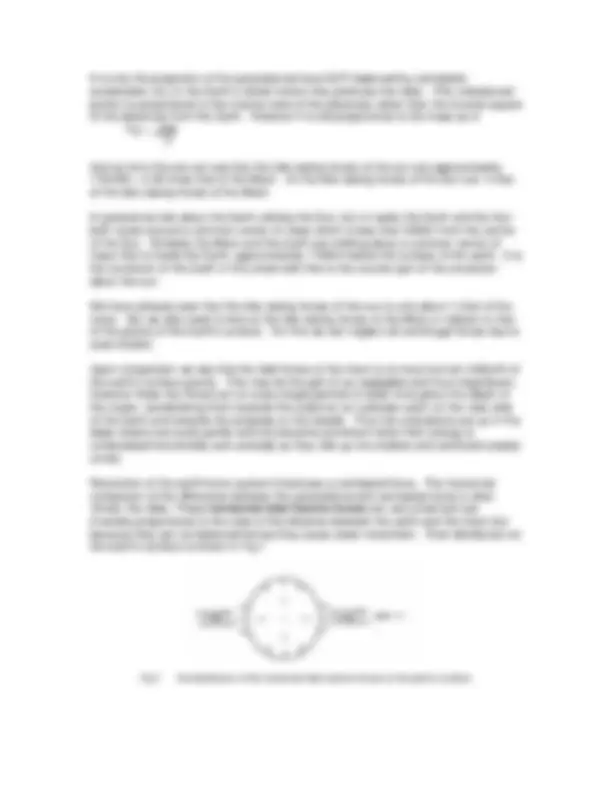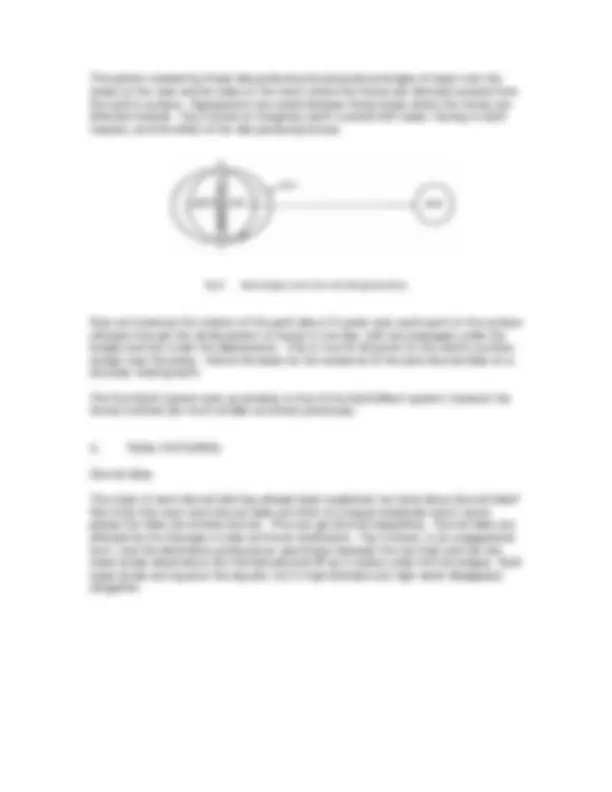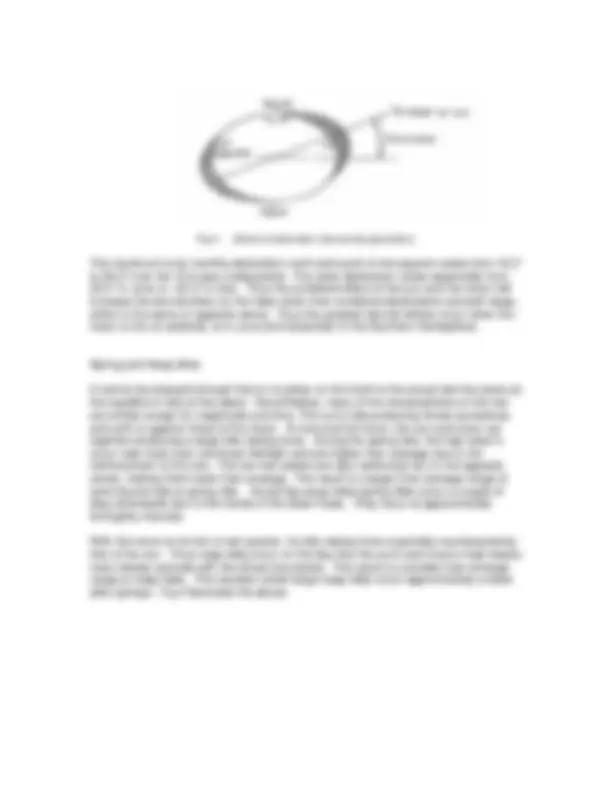








Study with the several resources on Docsity

Earn points by helping other students or get them with a premium plan


Prepare for your exams
Study with the several resources on Docsity

Earn points to download
Earn points by helping other students or get them with a premium plan
Community
Ask the community for help and clear up your study doubts
Discover the best universities in your country according to Docsity users
Free resources
Download our free guides on studying techniques, anxiety management strategies, and thesis advice from Docsity tutors
It will describe The periodic vertical movement of water on the Earth’s Surface (Admiralty Manual of Navigation).
Typology: Papers
1 / 10

This page cannot be seen from the preview
Don't miss anything!







Tides: The periodic vertical movement of water on the Earth’s Surface (Admiralty Manual of Navigation)
Tides are very often neglected or taken for granted, “they are just the sea advancing and retreating once or twice a day.” The Ancient Greeks and Romans weren’t particularly concerned with the tides at all, since in the Mediterranean they are almost imperceptible. It was this ignorance of tides that led to the loss of Caesar’s war galleys on the English shores, he failed to pull them up high enough to avoid the returning tide.
In the beginning tides were explained by all sorts of legends. One ascribed the tides to the breathing cycle of a giant whale. In the late 10th^ century, the Arabs had already begun to relate the timing of the tides to the cycles of the moon.
However a scientific explanation for the tidal phenomenon had to wait for Sir Isaac Newton and his universal theory of gravitation which was published in 1687. He described in his “ Principia Mathematica ” how the tides arose from the gravitational attraction of the moon and the sun on the earth. He also showed why there are two tides for each lunar transit, the reason why spring and neap tides occurred, why diurnal tides are largest when the moon was furthest from the plane of the equator and why the equinoxial tides are larger in general than those at the solstices. Thus the gravitational theory became established as the basis for all tidal science. Details of the tides at any given place are governed by the responses of the ocean to the gravitational forces.
South Africa has a relatively simple tidal system with semi-diurnal tides and a relatively small tidal range. Australia is however very complex from a tidal point of view. It has a full spectrum of tidal regimes, and a tidal range varying from 1m to over 10m. This is due to coastal topography and the shape of the ocean bottom which plays a major role in determining the tidal patterns around the country. In addition, we must also look at non-gravitational factors (eg seasonal, wind) that frequently have a large influence on the behaviour of the sea level. This can add additional complications to an already complicated situation.
Why do we need tidal predictions? Knowledge of the times and heights of tides and the speed and direction of tidal streams is important to a variety of people. These include:
a. The Hydrographic Surveyor in order to reduce soundings to a common datum. This is very important, as the Navy would not be able to defend our waters without accurate charts.
b. The Navigator, particularly in estuarine and coastal waters and the approaches to harbours.
c. Harbour and Coastal Engineers in the construction of harbour works, bridges, locks and dykes.
d. The Public to know when to go fishing, sailing, cross rivers on hiking trails etc.
Firstly we need to look at Newton’s laws of motion and gravity, however centripetal acceleration plays a major part in this section as well.
Newton’s law of motion states that “the acceleration of a body equals the force acting on it per unit mass”
Acceleration (a) = Force (F) Mass (m)
Newton’s law of gravity states that “a body of mass M exerts a gravitational attraction on a unit of mass at a distance r of
Fg = GM r²
in which G is the universal gravitational constant (see definition list)
Centripetal Acceleration (Ac) is the acceleration of a body towards the center of curvature of the path along which it is moving and for a body with velocity along a path with radius of curvature (r).
(Ac) = v² r
We will now compare the gravitational attraction of the Sun on the Earth to that of the Moon on the Earth
Mass of the Sun = 27 million times that of the Mass of the Moon. Distance of the Sun to Earth = 390 times the distance of the Moon to Earth
Thus Fg(sun) = 27 x 10^6 Fg(moon) (390)²
= 178 times that of the Moon.
So the gravitational attraction of the Sun is 178 times greater than that of the gravitational attraction of the Moon. But how can this be? We all know the moon is more effective in producing tides than the Sun. There is a simple explanation for this, and it is not that we have been lied to!
The pattern created by these tide producing forces produce bulges of water over the areas on the near and far sides to the moon where the forces are directed outward from the earth’s surface. Depressions are noted between these areas where the forces are directed inwards. Fig 2 shows an imaginary earth covered with water, having no land masses, and the effect of the tide producing forces.
Fig 2 tidal bulges (semi-diurnal tide generation)
Now we introduce the rotation of the earth about it’s polar axis; each point on the surface will pass through the whole pattern of forces in one day, with two passages under the bulges and two under the depressions. This is true for all points on the earth’s surface, except near the poles. Hence the basis for the existence of the semi-diurnal tides on a diurnally rotating earth.
The Sun/Earth system sets up similarly to that of the Earth/Moon system, however the forces involved are much smaller as shown previously.
Diurnal tides:
The origin of semi-diurnal tide has already been explained, but what about diurnal tides? We know that even semi-diurnal tides are often of unequal amplitude and in some places the tides are entirely diurnal. Thus we get diurnal inequalities. Diurnal tides are effected by the changes in solar and lunar declination. Fig 3 shows, in an exaggerated form, how the declination produces an asymmetry between the two high and two low water levels observed at the mid-latitude point P as it rotates under the two bulges. Both water levels are equal at the equator, but in high latitudes one high water disappears altogether.
Fig 3 effects of declination (diurnal tide generation)
The maximum lunar monthly declination north and south of the equator varies from 18.3° to 28.6° over the 18.6 year nodal period. The solar declination varies seasonally from 23.5° in June to –23.5° in Dec. Thus the combined effect of the sun and the moon will increase the diurnal effect on the tides when their combined declinations are both large, either in the same or opposite sense. Thus the greatest diurnal effects occur when the moon is full, at solstices, ie in June and December in the Southern Hemisphere.
Spring and Neap tides:
It cannot be stressed enough that at no place on the Earth is the actual tide the same as the equilibrium tide at that place. Nevertheless, many of the characteristics of the two are similar except for magnitude and time. The sun’s tide producing forces sometimes acts with or against those of the moon. At new and full moon, the sun and moon act together producing a large tide-raising force. During the spring tide, the high water’s occur near local noon and local midnight and are higher than average due to the reinforcement of the two. The two low waters are also reinforced, but in the opposite sense, making them lower than average. The result is a larger than average range of semi-diurnal tide at spring tide. Actual big range tides spring tides occur a couple of days afterwards due to the inertia of the water mass. They occur at approximately fortnightly intervals.
With the moon at its first or last quarter, its tide-raising force is partially counteracted by that of the sun. Thus neap tides occur on the day that the sun’s and moon’s high waters most closely coincide with the others low waters. The result is a smaller than average range at neap tides. The resultant small range neap tides occur approximately a week after springs. Fig 4 illustrates the above.
The dynamic theory / real tide on the other hand, represents the tide as a wave “forced” by the tide-producing forces, and the rise and fall on the coast as a result of flow convergence or divergence. In theory, it allows calculations of tidal flows in the ocean, and the rise and fall on the shores. However, the real ocean basins have very complicated coastal and bottom topography and it is not possible to obtain exact solutions, except in the open sea.
There are several important factors that modify the movement of water in real tide situations:
a. The Sun/Moon: The moon’s gravitational effect is greater than that of the suns due to it’s closer proximity to the Earth, but acting sometimes in conjunction with the sun and sometimes in opposition it varies the amplitude and timing of the tides.
b. Geography: Land masses obviously impede and deflect movement of water on the Earth’s surface.
c. Friction: Friction retards the movement of water particles across the Earth’s surface – (the movement of tides across it is gradually slowing down the rotational speed of the Earth.)
d. Basin Oscillation: All bodies of water have natural periods of oscillation determined by their size and shape. All oceans are made up of a number of oscillating basins. The resultant oscillations at any one place affect the tidal movement or wave form depending upon the degree of resonance with the astronomic tidal curve.
e. Lunar and Terrestrial Orbits: The shape and plane of both the Earth’s orbit around the Sun and the moon’s orbit around the Earth are such that the distance between these bodies, their gravitational effect, varies continuously in cycles of months, years and even longer periods.
f. The Earth’s Orbit: is in the form of an eccentric ellipse (eg or pear shaped). At perihelion the Earth is 91.3 million miles and at aphelion it is 94.5 million miles away from the sun respectively.
g. The Earth’s Declination/ Tilt: 23° 27’ off the vertical, hence the declination of the relative position of the sun and the moon as they appear to revolve around the Earth.
h. The Moon’s Orbit: Also an eccentric ellipse with a varying apogee and perogee.
The Equilibrium theory explained above describes two bulges moving around the Earth from east to west at a steady rate. Their range would be 0.5m at the equator. This is not exactly what happens with the observed tides. The theoretical explanation of diurnal tides does not agree with the observations either. So why not?
The main reason for this complicated response to the tidal forcings is the fact that the land divides the world's waters into oceans, seas, gulfs etc. of different size, shape and depth. The only latitudes for the unimpeded circumpolar movement are around Antarctica and in the Arctic.
In addition, the water movements are affected by the rotation of the Earth. The Coriolis effect (which we will come to later) causes the water to take a curved path rather than a straight one and Kelvin waves produce different tidal ranges across channels. The best example of this is that of the English Channel where the French coast experiences a much larger tidal range than the British side
Natural Resonance
The various bodies of water have their individual natural periods of oscillation. This influences their response to the tide- raising force. The Pacific Ocean has, in general, a natural period of oscillation of about 25 hours, making it resonant to the diurnal components of the tide raising forces, so the tides tend to be diurnal there. The natural period of oscillation of the Atlantic is about 12.5 hours making it resonant to the semi- diurnal components and so the tides in that ocean are mainly semi-diurnal. Pacific tides are observed to have much more diurnal characteristics in general than Atlantic tides. There are also seas that have a natural period of oscillation that makes them unresponsive to either diurnal or semi-diurnal forces, these are known as non-tidal waters. Good examples of non-tidal waters are: Eastern Mediterranean, Baltic, Black and Caspian Seas
Shallow Water Effects
Tides can be regarded as long waves, even in the open oceans as they have wavelengths much longer than the water depth. When a tide propagates into shallow water it’s wave form is distorted from its sinusoidal form. In the shallows of the continental shelves, as the wave form’s amplitude becomes a significant proportion of the water depth, their crests build up and the tidal range increases. At the same time however, the bottom friction removes more and more of the tidal energy, retards the trough and reduces the range. Irregular coastal topography further distorts the picture and exact mathematical solutions are rarely possible in these conditions.
Tides in the open ocean are usually of much smaller amplitude than those along the coast. As mentioned earlier, this is partly due to amplification by reflection and resonance. It is however, more generally the result of shoaling: as the wave propagates into shallower water, its wave speed decreases and the energy contained between crests is compressed both into a smaller depth and a shorter wavelength. The tide height and the tidal stream strength must increase accordingly. If, in addition, the tide propagates into an inlet whose width further diminishes toward the head, the wave energy if further compressed laterally. This effect, called funneling , also causes the tide height to increase.
Tidal bore is an extreme case of shallow water effects. It occurs usually at low water springs when a tide with a large range is funneled into a river or estuary with a steeply
Fig 6 Generation of tsunamis by a submarine earthquake (rock and water displacements are not drawn to scale)
Tsunamis are unlike ordinary water waves on the sea surface. A large wind generated wave may have a wavelength of 400m and be moving in deep water at a speed of 90 km/h. The wave height when it breaks on shore may only be 0.6 – 3 m, but near shore a tsunamis may peak up to heights of 15 – 30 m. This great increase in wave height near shore is caused by bottom topography; only a few localities have the combination of a gentle sloping offshore shelf and funnel shaped bay that force tsunamis to awesome heights (the record height was 85m in 1971 in the Ryukyu islands south of Japan.)
Although the speed of the wave slows dramatically as it moves through shallow water, a tsunami can still hit some shores as a very large, very fast wave. Because of its extremely long wavelength, a tsunami does not withdraw quickly as normal waves do. The water keeps on rising for five to ten minutes, causing great flooding before the wave withdraws. A tsunami’s long duration and great height can bring widespread destruction to the entire shore zone.
We cannot predict any of these non-tidal factors affecting sea level, and so the extreme events produce values far outside the predicted heights.